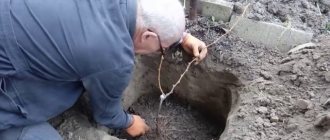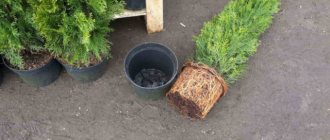When can peonies be replanted?
Taking the necessary precautions, peony bushes can be replanted in spring, summer and autumn. It is necessary to take into account some nuances.
In spring, peonies do not divide. Many gardeners claim that digging up a peony in spring can destroy or greatly weaken the plant. Others believe that replanting a bush in case of urgent need is possible immediately after the snow melts.
As long as the air temperature does not rise above +10 degrees and the above-ground part of the peony does not begin to grow, the plant can be moved to another place.
In the middle zone, the beginning - mid-April can be considered a suitable time for transplantation. With warming, the peony roots will begin to grow small young roots, which will help the plant take root in a new place.
Important! When replanting, you must not destroy the earthen ball in which the roots are located. You need to move the flower into a new hole very carefully.
If the transplant is carried out carefully, it will not affect the condition of the flower. A peony transplanted in spring will bloom in summer as usual. However, for the gardener’s confidence, the flower buds can be removed from the flower, giving the plant the opportunity to direct all its strength to take root in a new place.
In summer, perennials prepare for a change of residence at the end of August. At this time, the summer heat subsides and it often rains. The roots of the plant are already fearlessly washed from the soil, inspected for diseases and pests, and trimmed if necessary.
Transplantation can be combined with dividing the peony bush. The divisions planted immediately will have time to take root before the onset of winter.
Transplant in autumn. In the same way, you can replant and propagate a peony by dividing the bush in September - October. Experts recommend this particular time as the most painless time for replanting for the plant. During this period, the roots of the flower have finished growing and are entering a dormant stage.
Important! It is necessary to carry out the procedure 30-40 days before the onset of frost in a particular area. This is exactly how much it takes for a plant to take root in a new place.
Timing of autumn peony transplantation depending on the region
The date when to replant peonies depends on the region. The operating times indicated below are approximate; attention should be paid to the climate and prevailing weather in a particular area.
- Middle zone, Moscow region, Leningrad region - from August 20 to September 25;
- Ural and Siberia - from August 20 to September 10;
- Southern regions of Russia, Ukraine - all September, early October;
- Belarus – from August 25 to September 20.
Gardeners who follow the instructions of the lunar calendar will find it useful to know when to replant peonies in 2021:
- August: 5-7, 10-12, 15-16, 19-21, 23-25, 28, 29
- September: 9-11, 16-21, 24-25, 28-30
- October: 4-8
Autumn peony transplant step by step
Above we looked at when you can transplant peonies to another place, now let's figure out how to do it correctly. A few weeks before starting work, it is necessary to prepare planting holes for peony bushes. A hole is dug about half a meter deep and the same in diameter. This size is necessary to fill the hole with nutrient substrate.
The procedure for filling the hole is as follows:
- river sand (or fine gravel, expanded clay) is poured onto the bottom in a layer of 3–4 cm for drainage;
- Next comes rotted manure or compost up to half the volume of the pit;
- the top layer is turf soil mixed with ash.
Adding mineral fertilizers when planting peony is not required.
On a note. Peony does not like acidic soil; if the soil on the site is exactly like this, liming is required (adding lime, wood ash, chalk or soda to the soil).
The peony bush is dug up with a pitchfork from different sides, retreating 20-25 cm from the stems. Digging the bush in a circle, swing it, carefully releasing the roots from the soil.
Important! Peony roots are fragile and break easily, so be careful when digging. Do not pull the plant out of the soil by its leaves!
The roots of the plant are washed from the soil and inspected. If necessary, cut off damaged parts. Leave in the shade for several hours so that excess moisture leaves the roots and they become less fragile.
The bush is divided into parts using sharp pruners so that each section contains 4-6 growth buds.
To prevent diseases and stimulate growth, peony cuttings are soaked in a solution of Fitosporin or potassium permanganate (deep pink solution), then in Heteroauxin or Kornevin for half an hour.
Important points:
- The cuttings are planted in the hole to a depth of 15-20 cm, without deepening the growth buds! They should be covered with 3-5 cm of soil.
- The soil around the bush is pressed well and shed generously.
- The foliage of the plant is cut at a height of 15 cm so that the flower does not waste energy maintaining green mass.
Useful video about flower transplantation
The authors of the Garden World website share information on when to replant peonies and how to do it correctly.
Video: how to divide peonies
How to properly transplant a peony to another place?
The replanting scheme differs from planting in that the bush must first be dug up and divided into parts. Further actions are identical: preparation of the planting hole, soil mixture, compliance with planting rules and further care.
We remind you that you can replant a flower for the first time no earlier than 4-5 years after planting. Such divisions will grow and bloom better. And if the bush begins to bloom worse and gets sick more often, after 10-12 years of growth in one place, then it is recommended to move it to a new place.
How to dig up peonies?
- The roots of the plant are able to penetrate up to 80-90 cm in depth, and they are quite delicate.
- Therefore, you need to dig carefully, and better with a pitchfork. At a distance of 40-50 cm (about 40 cm is a 4-5 year old specimen, the older it is, the greater the distance), dig the ground around the bush about two bayonets, loosen it and try to remove it from the ground using two shovels.
- Gently wash the rhizomes from the soil with a stream of water.
- Cut off the above-ground part at a height of 4-6 cm, and place it in the shade for 3-4 hours so that the roots soften a little.
Digging up a bush for further division into sections
How to divide a peony bush?
Dividing a bush into “divisions” is not so simple: the roots are tightly intertwined, and finding suitable pieces of rhizomes (size, buds and adventitious roots) is not always easy.
- Using a knife, cut the rhizome into 8-12 cm pieces, on which there will be 3-4 buds and 3-4 adventitious roots (at least 5 in length, 0.8-0.9 cm in diameter). It is better if there are three buds, and a maximum of five (it is not recommended to transplant large “divisions” with a large number of buds). If the bush is very old, then you can drive a wedge into the middle of the rhizome, which will split it into a couple of pieces and then act according to the situation.
- Carefully inspect each division and, if found, cut off any rotten or small roots.
- Treat the cuts and the entire bush with preparations containing copper (Bordeaux mixture, copper oxychloride, etc.) and sprinkle the cut areas with charcoal powder. Leave the seedlings outside in a shady place for a day.
- To prevent the appearance of root rot, place the roots before planting for 1-2 hours in a solution of potassium permanganate (1 g per 2.5-3 liters of water).
- For convenience, attach a label with the characteristics of the variety and bush to each division.
Peony divisions ready for transplanting
ADVIСE
- If you are dividing a large rhizome, then you need to remove very old parts (usually they are hollow and rotten), and wash the cut areas with potassium permanganate and sprinkle with fungicide (copper sulfate, potassium sulfur or modern preparations - see the article on the fight against powdery mildew - chapter of the remedy) .
- If part of the root with one single bud suddenly breaks off on your favorite flower, then do not despair. Replant and care for the division anyway. In most cases, the seedling will survive and will be just as beautiful, only the bush itself develops more slowly. Moreover, try to germinate just pieces of the root. After all, buds may hatch on it in 1-2 years. To do this, dig it in and water it periodically.
- A cutting with many buds and a small number of thick storage roots will develop poorly due to a lack of nutrients. But if it’s the other way around, then the root system will develop poorly.
- A division with 1-2 buds and a piece of rhizome blooms a year later due to slow development, but in the end a healthy and developed bush will grow. It is better to grow them in separate beds.
PREPARATION FOR TRANSPLANT
Before transplanting the peony to a new location, soak its roots in a solution with a growth stimulator (“Heteroauxin”, “Rooter”, “Succinic acid”).
After wetting, the seedling is dried for 5-10 minutes.
Next, we plant the “delenka” according to all the rules and take care of it as after planting. Instructions are given below in the article.
Features of suction roots
Each bush has several thousand suction roots, which are almost invisible to the naked eye (slightly thicker than a spider's web) and go vertically down to great depths. It is for them that they dig such deep planting holes, make a layer of fertilizing and drainage if groundwater is close.
Many gardeners mistake the short white roots for suction roots, but they are an annual continuation of the thick storage roots that appear at the end of September.
Therefore, it is recommended to plant peonies and prepare cuttings from the end of August to the end of September, before they appear.
Transplantation depending on the condition of the plant (with buds, flowers)
It is also important to know when to replant peonies depending on their stage of development. The florist must remember that the root system of the peony cannot be disturbed during the period of budding and flowering! The plant actively expends energy on these vital processes, and the inevitable injury to the roots during transplantation will cause severe stress to the plant. Peony may die.
Digging up a peony after flowering is less traumatic for the plant. But it is better to wait until August-September for transplantation.
In the spring, before the peony has sprouted its first shoots, it is possible to carefully transplant the plant to a new location. It is necessary to dig up a perennial with a large ball of earth.
When transplanting a large peony bush, it is more convenient to work together. Having dug the bush in a circle with a pitchfork and swinging it, it is hooked onto the forks from both sides and pulled out.
On a note. Garden forms of peonies are replanted once every 10 years. Wild forms of peonies grow in one place for up to 50 years. Bushes no younger than five years old must be divided.
Choosing a location, the best predecessors and neighbors
Peonies grow well and bloom only in sunny places, without stagnant melt and rain water. With excess moisture, succulent roots easily succumb to putrefactive fungi. The best predecessors are legumes, as well as crops that you have fertilized and fed well this season (cucumbers, zucchini, pumpkins, tomatoes, cabbage, etc.). Peonies should not be planted after similar perennials that have depleted the soil for several years in a row.
Ornamental plants with other flowering periods will be good neighbors: crocuses, tulips, daffodils, lilies, asters, chrysanthemums. You should not plant actively growing shrubs and seedlings nearby, which in 1–2 years will begin to shade the peonies.
Transplantation depending on the type of peony
The replanting recommendations described above are given for the most common and unpretentious ones - herbaceous peonies.
Tree varieties and Ito hybrids require more careful treatment. Plants should not be disturbed unless absolutely necessary.
Tree peonies are replanted in August-September in the same way as herbaceous peonies. Particular attention must be paid to carefully removing the plant from the soil. The roots of tree peonies are fragile and reach a length of 80 cm.
- The branches of the bush are tied into a bundle so that they do not interfere with work and do not break.
- The bush is dug around the circumference, 40 cm away from the center. First, they dig a trench on the bayonet of a shovel, then they take up a pitchfork, getting deep into the roots.
- Carefully swinging the peony, hook the earthen ball with roots onto a fork and remove it from the hole.
Advice. To prevent the earthen ball from crumbling, a day before transplanting, the peony is watered generously with water. - In a new planting hole, the perennial is planted in the same way as it grew in the old place, without deepening it.
Peonies are transplanted using the same technology as tree peonies. The most important point in placing a bush in a hole is not to bury the growth buds.
Preparing the site for transplantation
The new growth site should be well lit, protected from wind and drafts, but without air stagnation. You should also avoid areas where water stagnates and groundwater flows close to you. In an excess of moisture, peony roots quickly rot and are affected by fungal diseases.
How to propagate peonies for planting in spring and autumn
The future growth site is prepared two weeks before transplantation:
- A planting hole is dug 50x50 cm and 60 cm deep.
- Drainage made of broken bricks and crushed stone is laid at the bottom.
- The planting hole is filled with a nutrient mixture from a bucket of humus, a bucket of sand and a glass of superphosphate.
Note! After two weeks, the nutrient soil mixture will settle and the planting hole will be ready. To bury the seedling, use the top layer of soil removed during hole preparation.
Why don't transplanted peonies bloom? Why do peonies wither after transplantation?
Young peony divisions bloom 2-3 years after planting. This is the natural time required for the plant to build up the required mass of roots. If the buds appeared on the bush earlier, they are pinched.
Untimely flowering will significantly weaken the peony.
Other common reasons for lack of buds:
- too small a section;
- a young and insufficiently strong peony bush, less than five years old, is divided;
- the plant is buried, the growth buds are covered with soil above 5 cm;
- the plant was planted shallowly, and in winter the flower buds froze;
- the area chosen for the flower is too shaded;
- the plant suffers from drought and lack of nutrition.
If planted incorrectly, the plant will have to be dug up and placed in the ground correctly.
Peonies can fade if the plant does not have enough moisture or, conversely, there is an excess of it. A flower may suffer from gray rot - the disease affects the stems at the base, the leaves wither and then fall to the ground.
A peony root segment that is too small may not be able to provide the above-ground part with nutrition. Therefore, it is recommended to trim peony leaves after replanting.
Further care
Caring for a young seedling shapes its resistance to weather conditions. Its growth and flowering directly depend on further care for the young bush during the next season.
Key points in caring for a transplanted peony:
- watering. If the peony was transplanted in the fall, then watering should be moderate and take into account the weather. A month after transplantation there should be a maximum of three waterings. During spring transplantation, watering should be plentiful and frequent;
- flowerbed care. Around the young peony you need to regularly loosen the soil and remove weeds;
- mulch. A layer of mulch protects against moisture loss and abundant weed growth;
- wintering. For the winter, the young peony is insulated with a layer of sawdust, spruce branches or peat. The layer that will protect young roots from freezing must be at least 15 cm;
- preventive treatment. In spring, peony should be treated against pests and diseases. Young bushes are most susceptible to diseases and parasite attacks.
Important! A successfully planted peony in the autumn season can bloom next summer. But you shouldn't let it bloom
This will only take away the power from the bush, and it will take it from a small root growth. Flowering will take all its reserves of strength, and the peony will not survive the winter for the second year.
The next summer, one bud is left on the young bush. As soon as it blooms, it is cut off and examined for compliance with the variety. If there are shortcomings in color, shape or aroma, the procedure is repeated the next year, again leaving one flower, until the flower completely acquires its varietal characteristics.
Full flowering of peonies occurs 3-4 years after planting.
How to plant peonies and when to do it is best for the plant and the gardener - information useful not only for beginning peony growers, but also for experienced connoisseurs of these lush garden bushes. After all, replanting and propagation are part of the full care of the plant.











